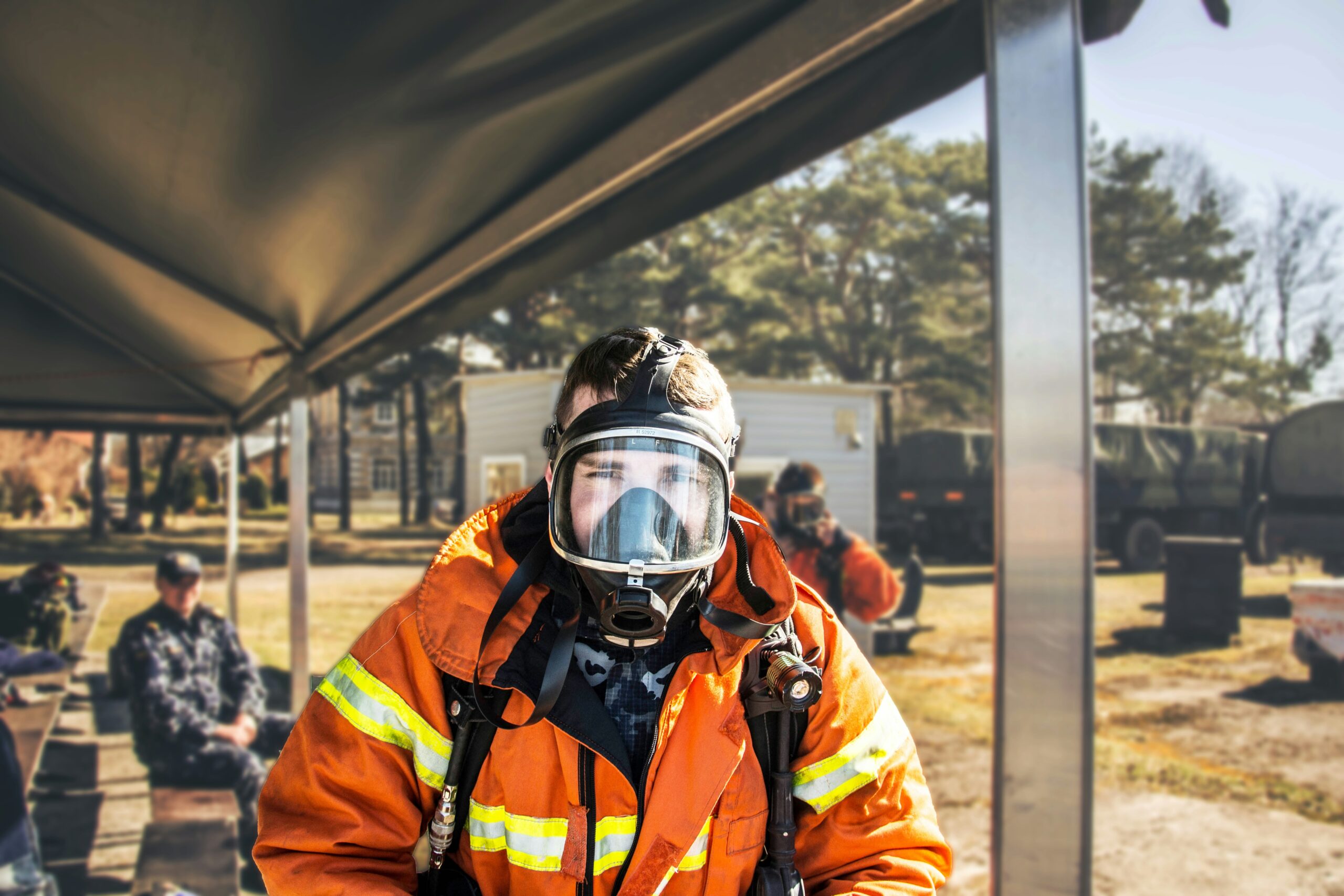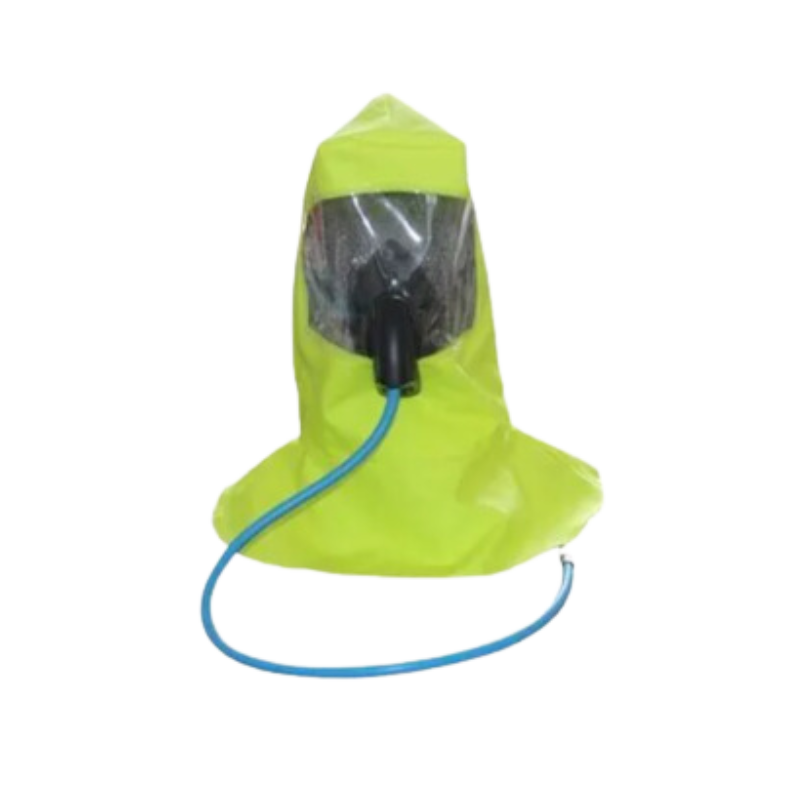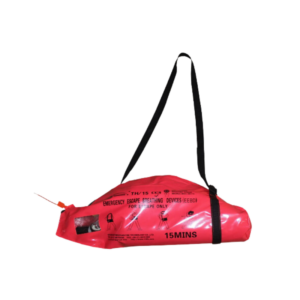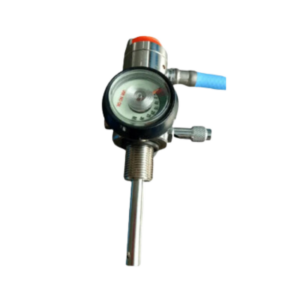Emergency Escape Breathing Device (EEBD)
View Edtech's extensive range of Emergency Escape Breathing Device (EEBD) equipment.
An Emergency Escape Breathing Device (EEBD) is a lifesaving apparatus designed to provide breathable air in hazardous environments. It is typically used in emergencies, such as fires or toxic gas leaks, enabling users to safely evacuate. Compact and portable, the EEBD features a hood or mask connected to a small, pressurized air cylinder, ensuring immediate and reliable respiratory protection during escape.
Products
Product successfully added to the Quote List
Product successfully added to the Quote List
Product successfully added to the Quote List
Product successfully added to the Quote List
View Other Categories
What Is An Emergency Escape Breathing Device (EEBD)?


An Emergency Escape Breathing Device (EEBD) is a crucial lifesaving apparatus specifically designed to provide breathable air in emergency situations where the ambient atmosphere has become hazardous or life-threatening. These devices are indispensable in environments prone to fires, toxic gas leaks, or other incidents that can compromise air quality, posing an immediate and severe threat to human life. The primary function of an EEBD is to enable individuals to evacuate dangerous areas safely by supplying them with a temporary but sufficient supply of clean, breathable air. In many emergency scenarios, quick access to breathable air is the difference between life and death, and an EEBD ensures that workers or crew members can survive long enough to reach safety.
An Emergency Escape Breating Device (EEBD) is meticulously designed to be compact, lightweight, and highly portable, making them easy to store, access, and use in times of emergency. This portability is crucial, as emergencies often require individuals to act swiftly, sometimes under extreme duress. Most models of EEBDs are compact enough to be mounted in strategic locations, such as on walls in industrial facilities, ships, or offshore platforms, where they can be accessed in seconds.
Typically, an EEBD consists of a hood or mask connected to a small, pressurized air cylinder that contains a finite supply of breathable air. The hood is made from flame-resistant and transparent materials, ensuring that the wearer is protected from heat, smoke, and other hazards while still maintaining clear visibility during an evacuation. The transparency of the hood is particularly important in chaotic emergency situations, where smoke or other obstructions can limit visibility, making navigation and safe escape more challenging.
The air cylinder is pre-filled with compressed air, designed to supply the user with a limited, yet sufficient, amount of breathable air to last for about 15 to 20 minutes. This short duration is usually enough to allow individuals to escape from hazardous environments and reach a safe zone or muster station. However, the exact duration of air supply can vary depending on factors such as the design of the device, the user’s breathing rate, and the intensity of physical exertion during the escape. The air supply is non-rechargeable, meaning that once deployed, the device must be serviced and refilled to be reused.
One of the most important aspects of an Emergency Escape Breathing Device (EEBD) is its intuitive design, which allows for quick and easy deployment in emergency situations. Time is of the essence when faced with hazardous atmospheres, and EEBDs are engineered to be donned rapidly, even by individuals who are under significant stress or have little experience using the equipment. The design of these devices emphasizes simplicity, with clear instructions typically printed directly on the unit itself. The operation of an EEBD generally involves a few straightforward steps, such as removing the device from its case, activating the air supply, and securing the hood or mask over the head.
In addition to visual instructions, many EEBDs are equipped with indicators or alarms to alert the user when the device is activated and when air levels are low, ensuring that the wearer remains aware of how much time they have left. This user-friendly design ensures that even workers or crew members with minimal training in using safety equipment can quickly don the EEBD and evacuate to safety.
In the maritime industry, EEBDs are mandated by international safety regulations and are standard equipment on ships, offshore platforms, and oil rigs. Fires, toxic gas leaks, and explosions are constant risks in these environments, and the failure of primary ventilation systems can make breathable air scarce. EEBDs ensure that crew members have a reliable source of air while navigating through smoke-filled corridors or while attempting to reach lifeboats or muster stations.
The International Maritime Organization (IMO), through the Safety of Life at Sea (SOLAS) convention, mandates the presence of EEBDs aboard ships. These devices are strategically placed in high-risk areas, such as engine rooms, control rooms, and accommodation spaces, ensuring that all personnel have access to an EEBD in case of an emergency.
In underground mining, where the presence of toxic gases such as methane or carbon monoxide is a persistent danger, EEBDs serve as a lifeline for miners who need to evacuate swiftly when hazardous conditions arise. In these confined and complex environments, where access to breathable air can be limited, EEBDs provide miners with enough time to reach safety.
Given the life-saving nature of the Emergency Escape Breating Device (EEBD), strict regulations govern their design, construction, and usage. International standards, such as those outlined by the IMO, the Occupational Safety and Health Administration (OSHA), and various national safety bodies, ensure that EEBDs meet high-performance criteria in terms of durability, reliability, and ease of use.
To maintain their effectiveness, regular inspections and maintenance are necessary. This includes checking the pressure of the air cylinder, inspecting the condition of the hood or mask, and ensuring that the device is free from any damage, wear, or corrosion that could compromise its performance. It is also essential that EEBDs remain in an easily accessible location, and that personnel are regularly trained in their use to ensure that, in an emergency, the devices can be deployed quickly and correctly.
Furthermore, the lifespan of an EEBD’s air supply must be carefully monitored. Air cylinders are typically sealed, and over time the pressure within the cylinder may decrease. Regular checks ensure that the cylinder remains fully pressurized and ready for use. Once an EEBD is used, it must be recharged or replaced before it can be redeployed.




